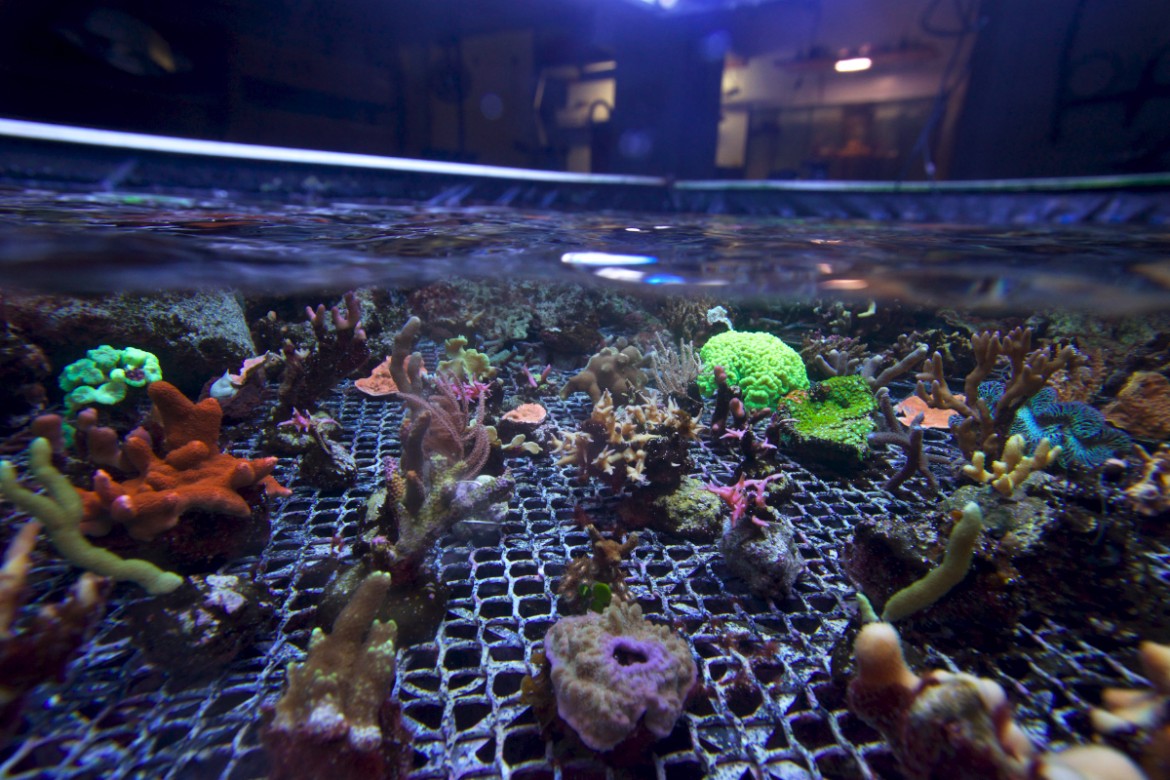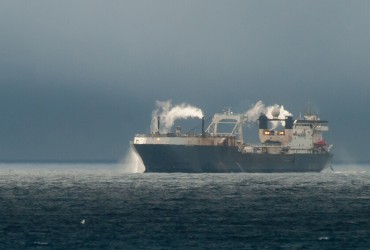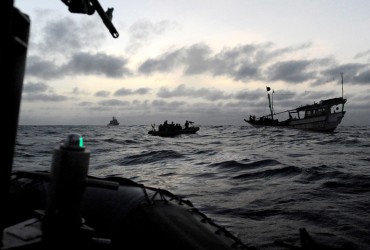Life on the farm
Invited beyond the blue door, we followed Johan inside. The air was warm and damp; the light was slightly blue. Jets and skimmers provide the background music to daily life on the coral farm.
The farm is made up of 150 tanks in neat rows and stacks; it is a living laboratory and an extraordinary underwater garden. Leaning over the edge of one of the tanks I spotted an amazing array of coral species: 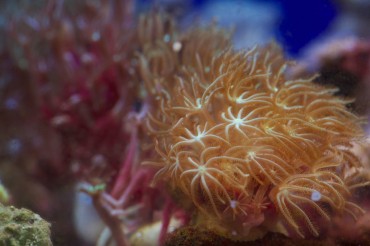 Seriatopora Hystrix, Briaerum and Acropora, each one anchored to a small rock – one of the many secrets to successful growth, as we were to discover.
Seriatopora Hystrix, Briaerum and Acropora, each one anchored to a small rock – one of the many secrets to successful growth, as we were to discover.
To get the business going, Remi and Johan imported farmed coral from Indonesia. Some of the parent strains still come from Asia, but the business relies primarily on trading locally to diversify crops. They started with less that 100 species and today have almost 400.
All coral species have similar requirements: while they are self-sufficient in terms of food, they need light, minerals (calcium and magnesium) and a stable temperature that varies between 24 and 28 degrees centigrade.
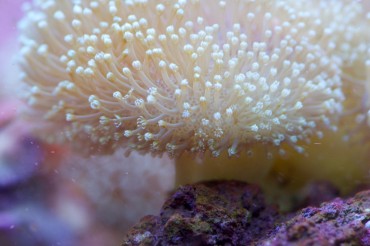 Remi and Johan work hard to maintain a carefully controlled environment. What is so natural in the wild is challenging to recreate in tanks in Brittany as is amply demonstrated by the multitude of technical systems in place to moderate and adjust water temperature, acidity and quality.
Remi and Johan work hard to maintain a carefully controlled environment. What is so natural in the wild is challenging to recreate in tanks in Brittany as is amply demonstrated by the multitude of technical systems in place to moderate and adjust water temperature, acidity and quality.
The farm’s water tanks contain 100,000 litres of seawater pumped out of the Bay of Camaret. Between 3,000 and 5,000 litres are replaced daily and the water that flushes back into the bay, having been filtered, heated and treated, is cleaner than when it came out, according to Johan.
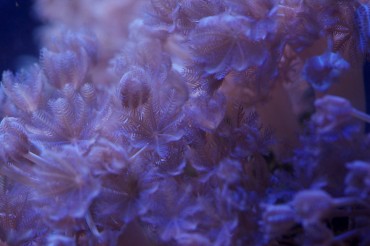 The business partners had to think creatively to provide light and heat and have managed to fulfil both requirements by using Neon lighting. The heat the lights generate reaches the depths of the shallow 10 centimetre tanks while providing plenty of light. For the winter months, they add a heat pump to maintain the right temperature. Energy bills represent an eighth of their annual outgoings.
The business partners had to think creatively to provide light and heat and have managed to fulfil both requirements by using Neon lighting. The heat the lights generate reaches the depths of the shallow 10 centimetre tanks while providing plenty of light. For the winter months, they add a heat pump to maintain the right temperature. Energy bills represent an eighth of their annual outgoings.
Then there is the small matter of the right rock. To successfully farm coral you need to have ‘living’ rocks, rocks that have the exact porosity required for the coral to anchor to it. These rocks usually come from Indonesia, but bearing in mind that for a 600-litre aquarium, you need 60 kilograms of rock, this was not a sustainable option. “Considering the number of aquarium enthusiasts, the quantity would quickly amount to tons and given the environmental impact, we had to find a solution,” said Johan. “ We found ceramic rocks that have the same properties as ‘living’ rocks and that have the added bonus of being decorative.”
In tank farming, the biggest threat to coral is bacteria, which is why Remi and Johan cultivate so many different species. Biodiversity eliminates this risk. And with no natural predators such as starfish lurking in the depths of the tanks the Camaret-farmed coral is free to grow by between 0.5 and 1 centimetre per month.
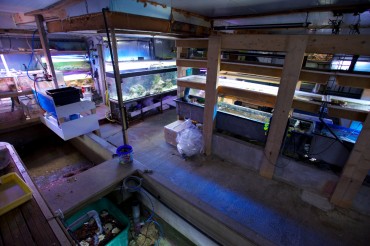 If farmed coral grows so successfully, then why not transplant it to coral reefs damaged by storms or climate change? “When a storm damages a reef, the broken coral can repopulate the damaged area quite naturally. If you implant farmed coral without knowing the parent strain, you run the risk of contaminating the whole reef with bacteria. With regards to climate change and its effect on coral, we need to address the root of the issue, implanting farmed species is not a solution,” said Johan.
If farmed coral grows so successfully, then why not transplant it to coral reefs damaged by storms or climate change? “When a storm damages a reef, the broken coral can repopulate the damaged area quite naturally. If you implant farmed coral without knowing the parent strain, you run the risk of contaminating the whole reef with bacteria. With regards to climate change and its effect on coral, we need to address the root of the issue, implanting farmed species is not a solution,” said Johan.
And if a piece of coral accidentally makes its way into the Bay of Camaret? No risk of colonisation, the polyps would never survive the cold water.
